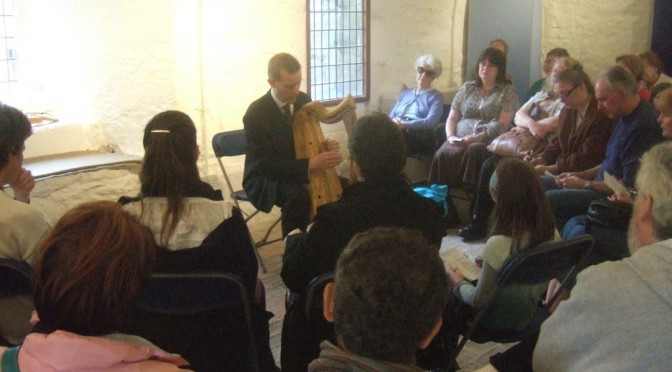The most popular record at yesterday’s Wighton Centre event was the 1914 disc of Archie Anderson singing Scots songs with a wind-band accompaniment. Some of the Scots Song group who meet weekly in the Wighton Centre were there, and they of course knew the songs and so were very interested to hear this 100 year old recording being played on the antique wind-up machine.
I played his recording of “Jock o’ Hazeldean”, a traditional border ballad re-written by Water Scott, as part of the half hour event. At the end, Sheena Wellington acting as host suggested there would be time for an extra disc before everyone had to leave, so I asked if anyone had any requests, suggesting perhaps a second side of one of the discs we had heard. Archie Anderson’s record was the one called for, so I played the other side, “The Bonnie Lass of Ballochmyle”, a song by Robert Burns.
When I got home yesterday evening I played them both for you to hear as well! I hope you enjoy listening:









